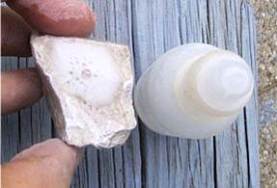How Do I Know What Hard Surface Floor I Will Be Cleaning? – Floor Identification Series – Part 5 of 7 – Acid Sensitivity Test
Testing Procedures for Floor Identification:
There are actually six different “tests” or evaluations you can perform to zero in on the type of floor you are being asked to clean. The fourth test or evaluation is to determine whether the floor is acid sensitive – the acid test.
- Acid Test – Place a few drops of HydraVitalize Acid Cleaner in an inconspicuous area on a spot on the floor.

- Observe whether it bubbles, fizzes, or does nothing. If it turns white and bubbles, it is because the acid is reacting with the calcium in the floor. This indicates an acid sensitive material, likely marble, limestone or travertine.
- A good quality penetrating sealer may slow an acid test so let it dwell for a few minutes.
- The acid reaction test can also be used to identify sanded grout. Sanded cementatious grout will react by bubbling and fizzing. Unsanded cementatious grout will have little reaction. Epoxy and other grouts will not react at all to the acid.
- Do not use an acid cleaner on any surfaces with dark, calcium based grout ( black, dark brown, dark gray, deep colors) as it will remove color and lighten the grout.
- If in doubt always use an alkaline cleaner such as HydraStone or HydraSolv as it will not damage stone, tile or grout surfaces.
- Cleaning application – you can’t use an acid cleaner on a stone floor that contains calcium carbonate. Alternative for brightening is QCT with OxyBreak.
Tags: acid sensitivity, acid test, HydraSolv, HydraStone, HydraVitalize, identification





